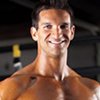By the time you see a picture of a fitness model on a website or the cover of a magazine their physique looks, in a word, perfect—like that person never missed a single rep, meal, or hour of sleep in their life. But as someone who has been on the business end of the camera a few times and spent countless hours working and training with models, I know that's far from the truth.
Just like everybody else, fitness models and bodybuilders shoot themselves in the foot on a regular basis. They make extreme choices when prudent ones would be better, let their weaknesses and cravings hold the steering wheel, and otherwise sabotage their results. And then, rather than recognize their mistakes, they stubbornly plow ahead and do the same thing again. Hey, I've been as guilty as anybody!
Enough already! Even more so now that I'm a parent, I believe the world needs less "try, try again" and more "try, stop, think, change, and then try again." Take heed of lessons others like me have already learned the hard way, and cut a few miles off the distance between "before" and "after."
Developing a phobia about carbs
Carbohydrates are the fuel you need to kick ass in the gym, no matter how long you're there. But if you're there for a long (>45 min) workout, as many aspiring fitness models are, carbs are even more important, because they're muscle-sparing—meaning your body will use them rather than resort to breaking down amino acids for fuel.

I know it's hip these days to believe that the best way to get super-lean is to cut carbs out almost entirely, but it's not the only way. I got down to 4.8 percent body fat (according to a DEXA) while tapering my carbs only down from 250 to 150 grams per day, up until the week before a show. Most definitions of low-carb set 125 grams per day as the upper limit. You can do it too, but there's a catch: You need to give yourself time.
Dieting too extremely
What's an extreme diet? To me, it's anything drastic enough that your training quality suffers as a result. Low-carb can be extreme, as I just discussed, but so can low-fat. So can low-cal. Low-hydration and low-protein may seem like obvious no-no's, but more people than you might think are guilty of cutting both—the latter as part of an overall calorie drop
Once and for all: Training hard allows you to burn the fat off your body, not starve it off. One type of transformation has a decent chance of lasting; the other bounces back with a vengeance.
Initiating a cut at too low of a caloric intake
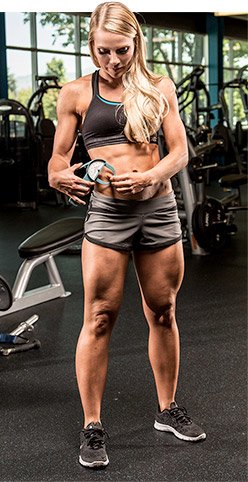
This is one of the most common problems I see, so I'm going to give it a bit more space. Let's be clear: I have no problem with cranking away in a caloric deficit to meet a deadline. However, a well-designed taper is a whole different animal from the sort of slash-and-burn many lean people think is necessary to get their definition sharp.
A common recommended energy deficit is 500 calories per day. If you're taking in 1,500 calories per day, you would burn 2,000 calories per day. However, at that low of an intake, you're probably missing out on many important macro and micronutrients that can help you to lose fat. If you shoot for a calorie intake of 2,500 calories instead—just an example—and a calorie expenditure of 3,000 calories, you'll get more of the nutrients you need to work harder, balance hormone levels, and burn that stored fat.
Here's your three-point plan:
- Up the intensity level of your workouts.
- Increase your calorie intake accordingly.
- Make your food choices as nutrient-dense as possible.
Cutting calories too drastically over time
It sounds so simple. To burn fat, get in a caloric deficit. To burn more fat, get in a bigger caloric deficit. But it doesn't work like that.
When you cut calories too drastically, it sets off a chain of events which actually slows fat-burning. First, your thyroid reacts by holding on to as much fat as possible. Also, your leptin levels will decrease, further slowing fat-loss. Some people actually gain fat on a low-calorie diet because of this cycle. I've never taken a client under the classic benchmark of calorie needs = 9-11 x body weight, and if you have a coach taking you lower, fire that coach today.
Worrying about the competition
Other people aren't the reason you lose. If you don't win, it's because you're not ready to win, whatever the reason. Take your lumps, learn the lessons you still need to learn, and get back to work.
Believing you can transform your body alone
Here's the cold hard truth—and I don't say this to try to sell you something. If you're able to transform your body by yourself, you didn't set your goals high enough. Good physiques are achieved alone, but great physiques require a team effort. You'll be doing the lion's share, of course, but other people have a lot to teach you if you'll set aside your ego and let them.
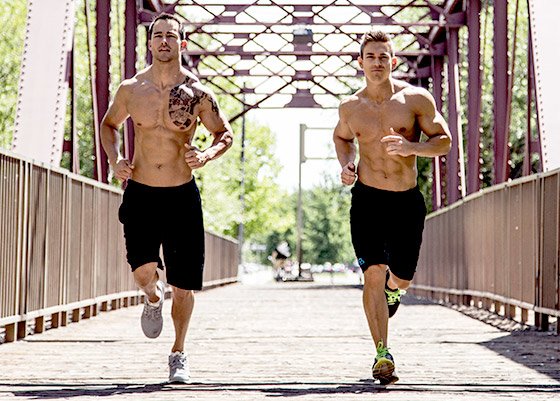
Arguing online when you should be in the gym
Debating with forum know-it-alls—or anyone for that matter—is a revolving door that inevitably ends up confirming your own bias. Plus, last time I checked, the best way to "win" a debate online is either:
- post more links to (possibly ill-informed) PubMed studies faster than the other guy; or
- make the last post, which also usually happens to be the nastiest.
Notice how neither of those options means winner is actually correct. The person who has nothing better to do with his time always wins. Don't be that loser.
Bringing protein intake down along with other macros
Research has shown time and time again that when you are cutting calories, you need to increase your protein intake to avoid muscle catabolism, especially if you're training at a high frequency and intensity. If you've been taking in 1 gram per pound of bodyweight, you may need to increase that to 1.5 g per pound or even 2 g, reducing your other macros accordingly.
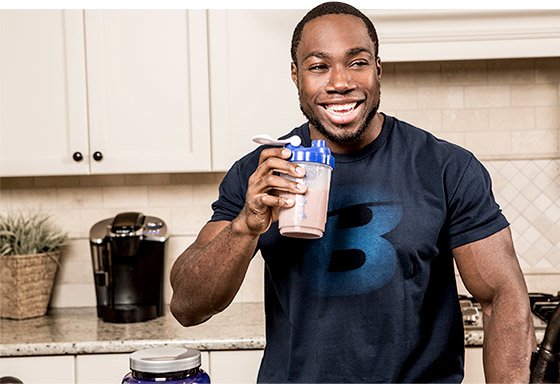
Focusing on numbers but forgetting about nutrients
If you're allowed 200 g of carbs per day, getting those grams from high-fructose corn syrup is going to demolish your fat-burning potential—and your health—whereas getting them from sweet potatoes and berries will help both.
No, I can't say all the reasons why, but how about fiber and micronutrients to start? You need them, whole foods have them, and industrial sweetener-sludge doesn't. Calories matter, and must be reduced gradually to sustain fat loss, but don't get so focused on numbers that you lose sight of the importance of nutrients. Your multivitamin isn't enough to save you!
Avoiding red meat
Most fitness models who don't eat meat simply look soft and lack muscle hardness, in my experience. Unprocessed, naturally raised meat is extremely healthy, and there is an abundance of evidence-based reasons to eat it—and be proud of it.
I consume a different red meat source at least twice a day up until the day of my competitions. I know that I look like crap without it. And if you think high-quality meat is out of your budget, just read this and get back to me.
Counting veggies in your macros
Just because I'm a big fan of meat doesn't mean I think it's all you need to eat. No meal is complete without veggies. Even my beloved meat and nuts breakfast has a big handful of spinach in the frying pan.

Seriously: Have you ever met a person who got fat by eating too many veggies? It's pretty much impossible for anyone but our four-legged friends, and even they have to spend all day grazing to pack on the pounds. For the rest of us, I think there's only one thing all nutrition camps agree upon: Eat more plant-based foods.
If you're new to nutrition, start with a minimum of 1 cup per meal, and don't worry about how they fit with your macros. If you're looking to take your physique to the next level, experiment with a minimum of 2 cups of veggies per meal—every meal. I guarantee your stomach will tighten up faster than ever.
Cheat meals you haven't earned
As I've said before, I believe that until you achieve 10 percent body fat for a man, or around 16 percent for a woman, your body has not earned a cheat meal. I admit, however, that scheduling one treat meal per week can be a great psychological tool for many clients I've worked with, so this one isn't black and white. But even then, you've got to earn that cheat meal with plenty of hard work during the week.
Skipping meals
Meal frequency doesn't matter blah blah blah. If we're talking about building an elite physique, the only guys who really believe this live in textbooks or are certified keyboard warriors. The rest of us know that skipping meals is one of the worst things you can do.
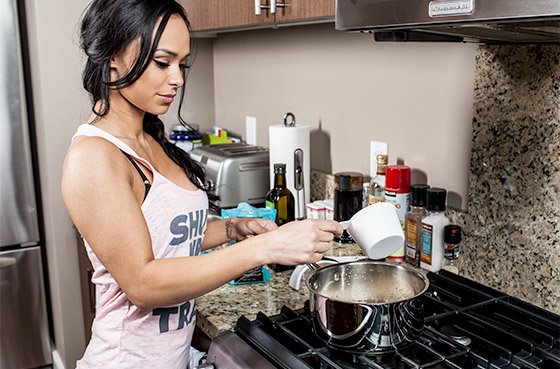
When you're living a hard-training lifestyle, waiting too long to eat forces your body to eat into muscle tissue for fuel. Your blood sugar drops and the temptation sets in to eat any food in sight. I've raided bulk sections at the grocery store at odd hours of the night after skipping meals. Plan your meals ahead and join the rest of us in the real world.
Too many diet foods
Egg whites, chicken breasts, plain rice, unseasoned broccoli, whey protein—oh my gawd, I'm getting sick just typing this out. Come on people. One of the best decisions I made was to hire a professional chef to teach me how to cook. After meeting her just a few times, I hired her again for 20 more lessons.
Dieting isn't hard if you know how to prepare delicious food. It's healthier and prevents you from losing all your friends because of your nasty gas.
Fearing multiple workouts per day
I realize this may not be possible for people who are already extremely pressed for time and can barely make time for one workout. However, this is my go-to principle for charging up fat-loss, and I strongly recommend that you try it if at all possible.
Getting two workouts per day requires a commitment, but is surprisingly workable for many people. It may mean getting your first workout before work, and your second one during your lunch break or after work. Use your morning workout for high-weight, high-speed, low-rep workouts, and do your higher-rep, lower-weight or cardio training in the afternoon or evening. Two-a-day training is super-powerful if the workouts are designed progressively, and it'll get you ripped to shreds in the final few weeks before a deadline.
Not getting blood tests
It boggles my mind how fitness people have no problem spending thousands of dollars on supplements and gym memberships each year, but they won't spend a penny to see what's really going on in their bodies. It's actually simple to analyze things like hormone levels. These hormones are ultimately responsible for whether your efforts in the gym are productive, or you just bust your ass to no place fast.
Let me spell this out: If your chemistry is off—meaning your hormones are subpar—you can have the perfect macros and training split, hire the most expensive trainer, and take the best supplements, and you'll still spin your wheels with nothing to show. Get your blood analyzed at least once or twice each year. You'll thank me.
Avoiding hypertrophy-centered workouts
Sure, fitness models don't need to be huge like Mr. or Ms. Olympia, but they need symmetry, development, and definition. As far as I'm concerned, you're not going to get them from swinging a kettlebell, doing CrossFit WODs, or knocking out a million bodyweight exercises. If you want muscle, you need resistance in the form of good old fashioned—and intelligent—bodybuilding-style workouts. Hypertrophy training builds the muscle, and it keeps the muscle.

Loading up on trashy carbs post-workout
Carbs have two roles post-workout: to stop catabolism and to restock muscle glycogen. But if you're trying to lose fat, you want your body to keep burning fat as fuel, so you don't necessarily want to completely top off your glycogen tank. However, you still want to stop that catabolic process and lower your cortisol levels, so you still need some post-workout carbs.
So what's the sweet spot? Research has shown that 30 g of carbs are sufficient to stop that catabolic process. Anything above that is just more stored-up glycogen. You can get 30 g from a glass of cherry juice or another quick, nutrient-dense snack. Don't go overboard with trashy post-workout candy carbs, when you can get enough from something simple and nutritious (remember number 9?).
Thinking you can gain size while keeping all six abs popping
I talked about this a lot in "10 True Confessions of a Pro Fitness Model." The only guys who can stay shredded and grow at the same time are genetic freaks and, of course, those supposed "fake natty" lifters everyone loves to call out online. If you want to gain size, get comfortable with a four-pack while you provide your body with more fuel to train harder and grow. I gave up on the dream of having abs all year 'round a long time ago because frankly, I love pizza and wine too much. They're never too far away when I need them, though.
Hang around guys who train like pansies
Have you heard of the law of five? Basically, you're the average of the top five guys you hang out with most. So if your top five friends are broke, your finances are probably a wreck, too. If your top five friends are divorced, Splitsville probably isn't too far over the horizon for you. If your top five friends are fat, then the only "visible abs" you see are on Bodybuilding.com.
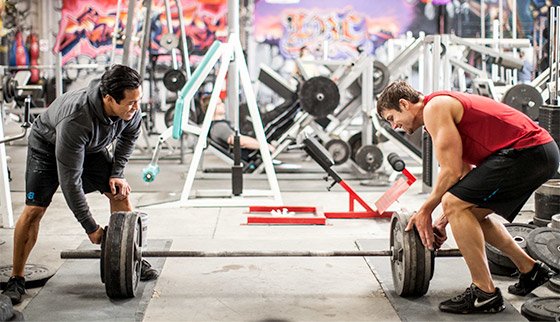
This applies to training, too. If your top five friends train like pansies, your training needs an honest assessment and an upgrade of both the physical and social variety. Surround yourself with the people who you want to become like, and you'll find yourself getting to their level faster than if you only watch them from a distance. Now go find your inspiration and live up to it!
